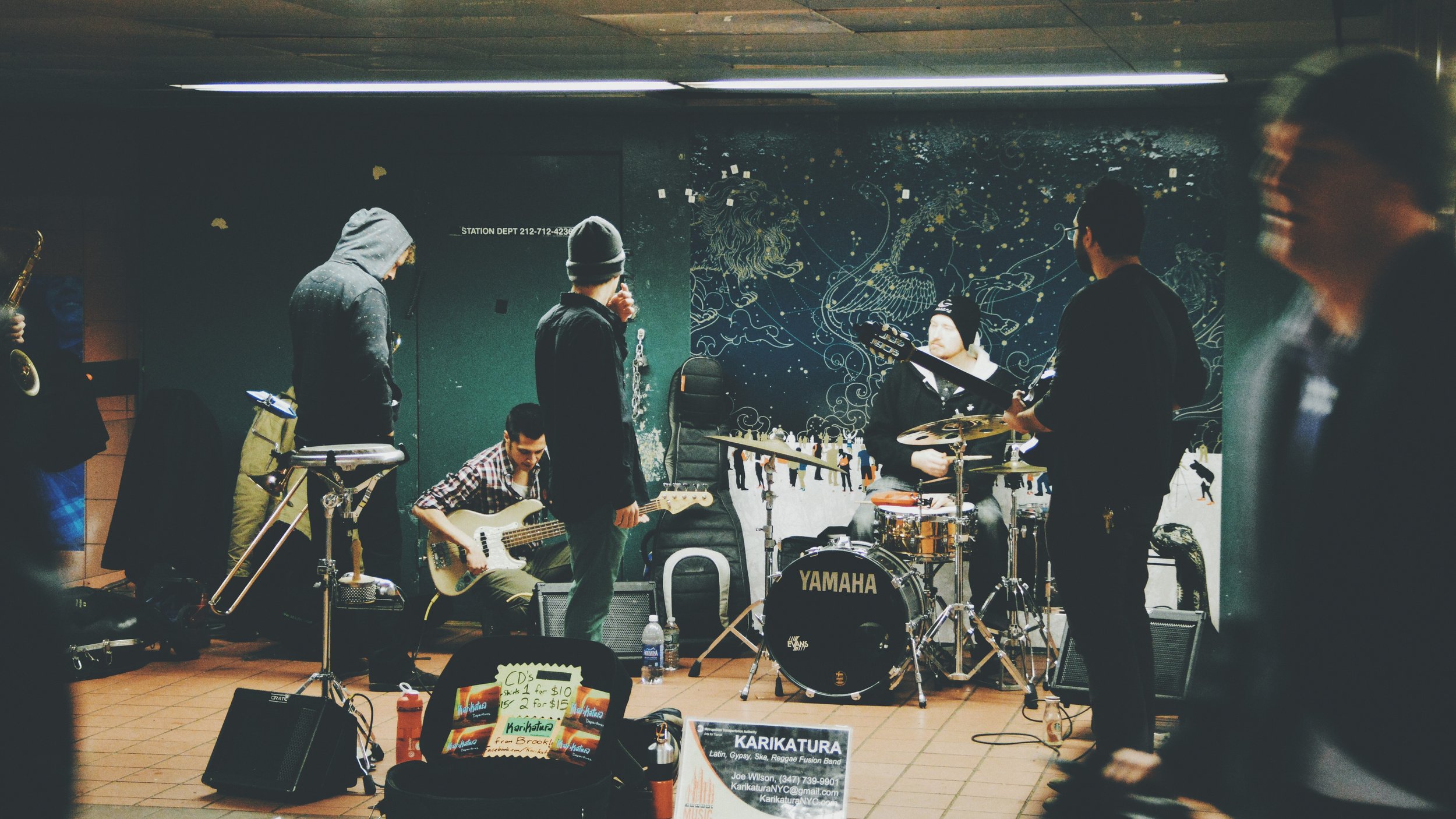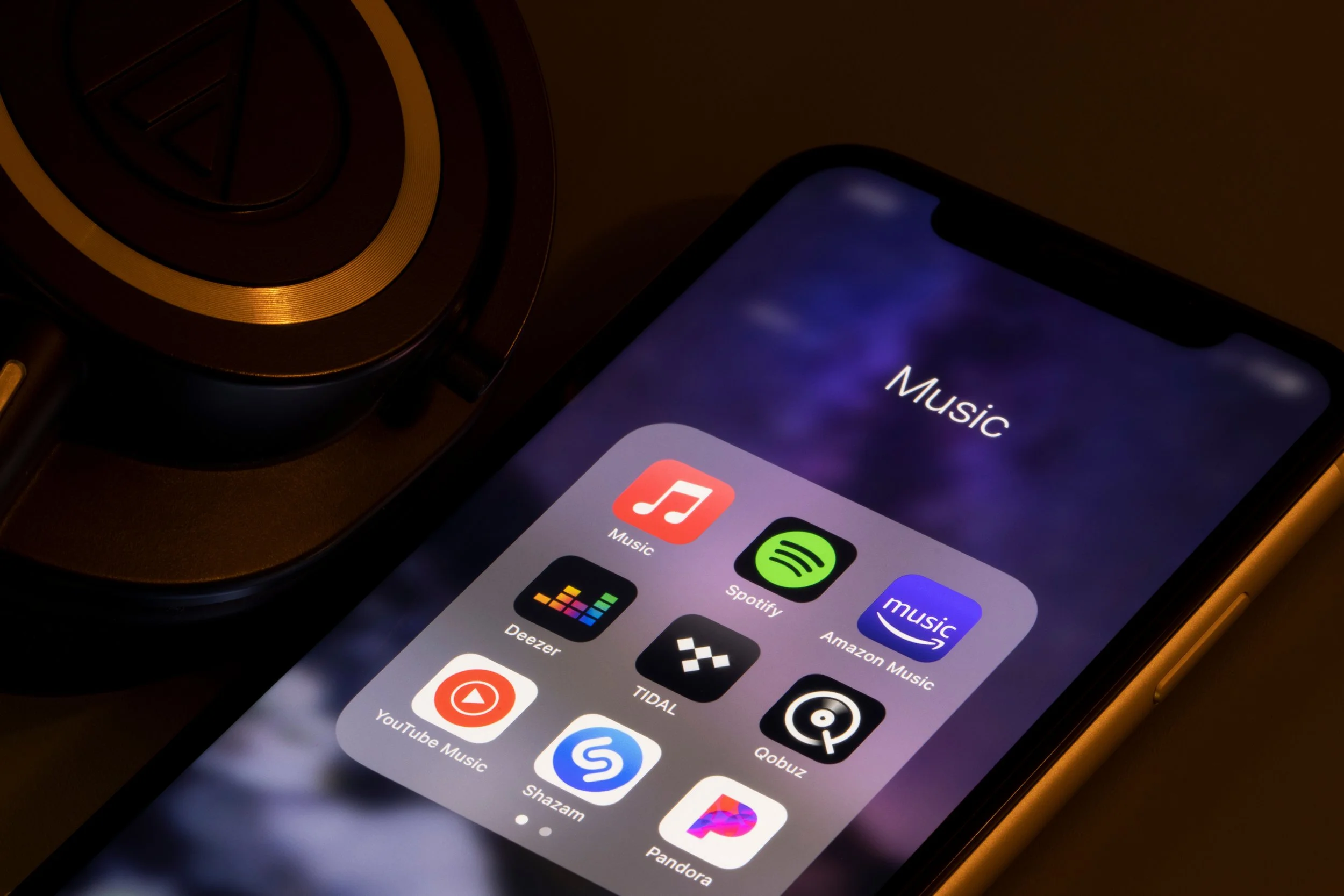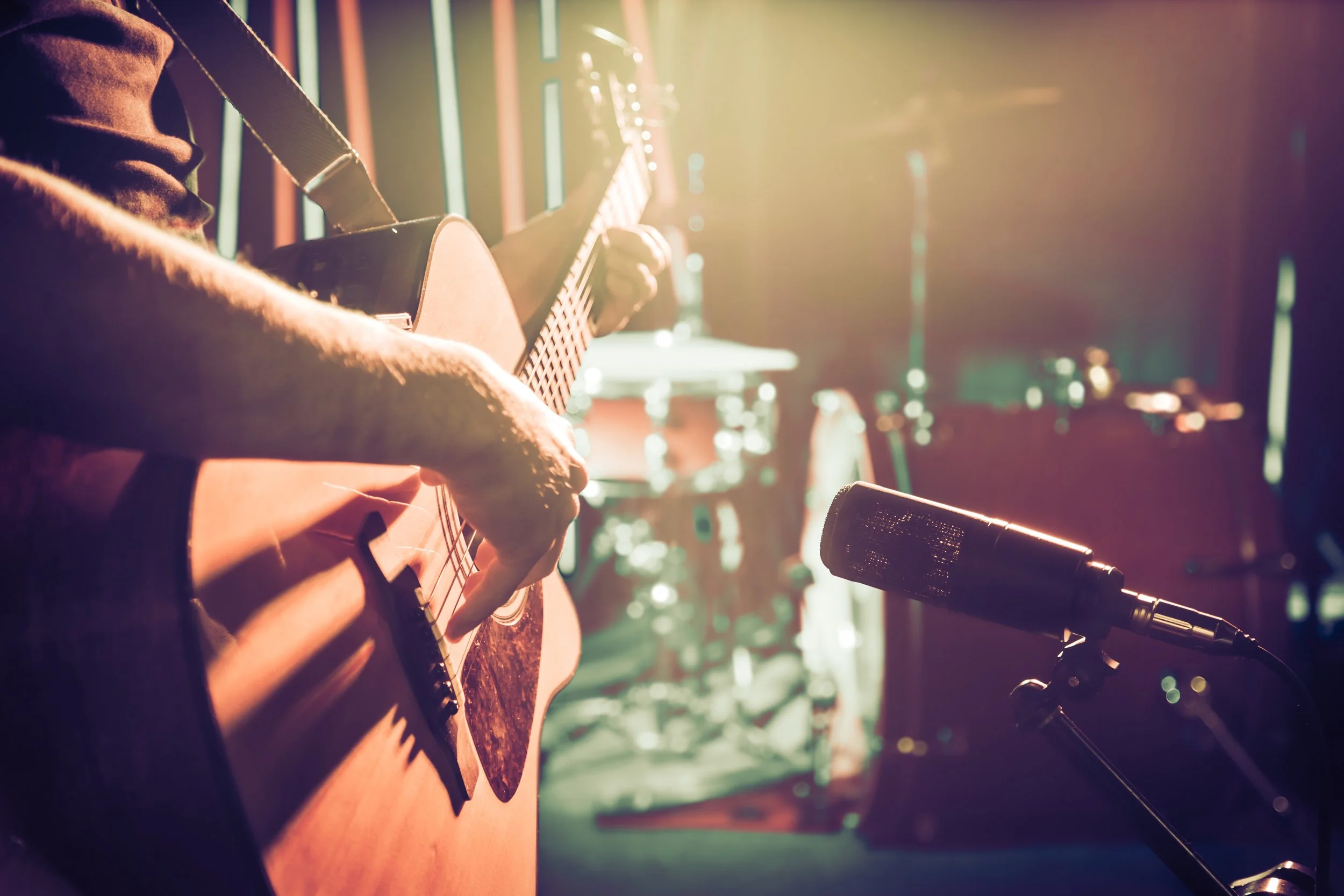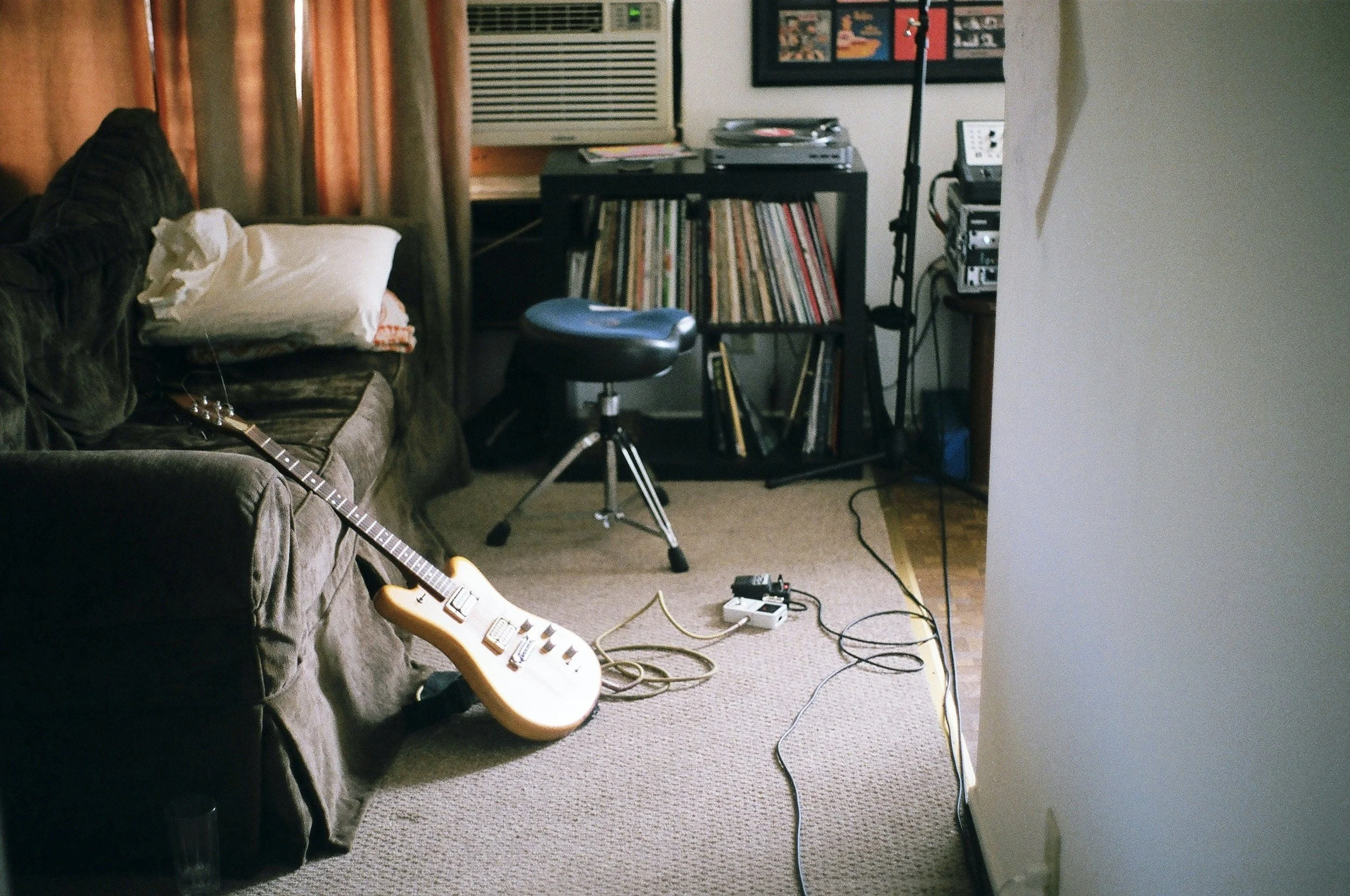Part 3:
Explaining Recorded Music Revenues
Karen Dio
Key Takeaways
Generating revenues with music
Dan Burton/Unsplash
Understanding how copyright generates revenues is the first step to leveraging the economic and social value of music. It is the economic foundation on which all revenue from music is built.
How exactly do sound recordings generate revenues? The answer is copyright.
The section below first explains what music copyright is and the revenues it generates. It then uses streaming to provide an example of how copyright revenues flow, presenting a picture of how this primary source of music industry revenues pays.
Record labels such as the independents that make up ORCA, as well as a number of other music organizations, support artists to ensure their music copyrights are registered and their use tracked. This ensures that artists are paid for their work.
How rights and royalties work
Sole y Sofia
When an artist’s music is used—such as when it’s performed, streamed, put on a vinyl record, or used in a film or on TV—the person or organization holding the copyrights for that work should receive a royalty payment for its use, unless the music is deemed royalty‑free or is in the public domain.
Copyright law and its administration are complicated. Two types of copyright apply to recordings, each with specific sub‑rights and laws differing by jurisdiction. Let’s break it down as simply as possible.
The two copyrighted works, or ‘pieces of intellectual property’
When an artist writes and records a song, transferring it to physical medium such as a vinyl, CD or hard drive, this triggers the creation of two separate copyrights:
1.
The specific recorded version of the composition or “sound recording” (often referred to as the “master”)
2.
The composition itself (often referred to as the “publishing” or “musical work”).
A song can have multiple sound recordings—or versions—associated with it, such as cover versions. For example, when Prince wrote the song “Nothing Compares 2 U”, he (and his business partners—labels and publishers) owned the copyright to the musical composition and his recorded version of the song. When Sinéad O’Connor famously recorded her cover version, she owned only the copyright to her specific sound recording of the song, not the composition.
There are many ways to split up the two rights. Both have associated sub‑rights[22], each of which the artist can assign to different parties and activate concurrently, depending on how a recording is used.
-
Under each copyrighted work, multiple sub‑rights—different ways to use, change, manipulate, or add to the copyrighted material—exist that can be exploited and assigned by the artist separately. The most important sub‑rights for music include:
(1) The rights to reproduce a work: for example, printing CDs or vinyl, or making a recording publicly available on streaming services. For example, when a fan streams a recording on their favorite platform, they trigger the right of reproduction for the sound recording and the composition.
(2) The right to distribute a work: linked to the right of reproduction, this right allows rights holders to control how their work is disseminated. By distributing an artist’s recording to streaming platforms, record labels are exercising the right to distribute the sound recording on behalf of the artist.
(3) The right to publicly perform a work: this right covers all audio broadcasts of a recording in a public space—live shows, radio and television broadcasts, recordings being played over a cafe or bar sound system, and more. Performance rights for the sound recording are often referred to as “neighboring rights”, and their implementation differs by jurisdiction.
(4) The right to create a derivative of a work: a derivative is produced when a new work is created using the copyrightable components of a previous work. In music, this includes uses such as sampling from existing recordings, which represents a use of the original sound recording and the composition, and requires both master and publisher agreement. Likewise, interpolations, where an artist uses a recognizable element—such as the melody or a distinct riff—of a previous piece of music in a new recording are considered derivative works and require publisher consent.
John Hult/Unsplash
Registering music
When a piece of music is recorded, either the artist, their record label, or publisher registers the work.
The specific processes and organizations involved differ for the sound recording and the composition, but the outcome is the same for both.[23] The registration lists each person entitled to a share of royalties generated by each copyright and the percentage of royalties they are owed (from 1 to 100). For the sound recording rights (the master right), owners might include the recording artist(s), record label(s), producers, engineers or mixers, while for the composition (the publishing right), this might include the writer(s) of a song and the publisher(s). Unique identifiers are then created to represent the sound recording (ISRC) and composition (ISWC). These identifiers are embedded in the metadata for the recording. When a recording is used, the attached metadata allows that use to be tracked and paid for. For example, when one uploads a properly registered recording to a digital distributor and it is streamed on a DSP such as Spotify, the metadata means the streaming platform can assign the stream correctly and ensure that all rights holders are paid.
This system underpins the music industry and ensures that those responsible for composing and performing music are remunerated. This data system and its management is at the heart of ensuring that the artist benefits from the music they create.
-
This process also varies by country, however the general principle/process of registering the different copyrights for a piece of music, and then tracking usage based on unique identifiers is consistent.
Understanding who owns what
Upon creation, the copyrights in sound recordings and musical compositions are assigned to the creator or author of the works. In music, this is usually recording artists for sound recordings and songwriters for compositions, although these can be the same in the case that a songwriter records their own song.
Recording artists and songwriters can then manage their copyrights in a number of ways, with common approaches including work for hire agreements, where they either record for a label or transfer their copyrights to another party for the life of the copyright, and licensing, where they assign their copyrights to other parties for a limited timeframe. These deals most often see the artist and partner share the revenues or profits generated from the use of the copyrights in exchange for support towards releasing and having the artist’s work used by others, though the exact terms of deals vary widely.
For sound recordings (the master right), artists most often record on a work for hire basis or license to record labels, who then assist with the recording, distribution and marketing of the music, and contribute to artist development and career growth. The details of copyright licenses and transfers vary and might be tied to a variety of factors, including a term length in years, or specific events, including the number of albums included in a contract, or the date of an album release.
For compositions, artists often assign their bundle of rights across multiple organizations, including music publishers. Artists and these organizations then work to directly license specific uses of compositions and also work with rights management organizations—Performing Rights Organizations (PROs), Collective Management Organizations (CMOs), and Independent Management Entities (IMEs)—to negotiate rates for and track the exploitation of different sub‑rights. This system differs depending on the country where the author or copyright owner lives and in some countries, these systems are lacking or non‑existent, which then requires the copyright to be registered outside of their home country, or ‘offshored’.
Clay Banks/Unsplash
How are revenues generated from the sound recording?
The diagram below shows the multiple pathways through which record labels and artists receive compensation for the rights associated with sound recordings.[24][25]
How do artists and labels get paid for the use of sound recordings?
-
*The majority of revenues (67%) generated by sound recordings come from streaming, with the bulk of these payments arriving from four major companies—Spotify, Apple, Google (YouTube Music) and Amazon.
**In the independent sector, the licensing body Merlin plays a key role in negotiating on behalf of independent labels across the world.
-
This diagram only shows the distribution of revenues to the sound recording, and does not include revenues generated by the composition. The distribution, reporting and collection of revenues related to the sound recording (‘master rights’) is much simpler than that of the composition (‘publishing rights’). Publishing is based on a complex web of rules and laws that differ by territory, and involves a wide range of collection societies worldwide, each providing a different level of infrastructure and accuracy to their distributions. Master rights, in contrast, can be granted on a global basis, and usage is reported and collected from a single source. Both require government policy and intervention to provide the institutional and legal frameworks for rights to generate revenues and for artists to be paid.
-
Merlin, the digital licensing body representing independent labels, distributors, and rights holders is an example of innovation around licensing in the independent sector, facilitating a kind of one stop shop model to make their music accessible. Merlin has agreements in place with digital services across the globe to ensure its members are remunerated for the use of their music.
An introduction to streaming economics
David Pupaza/Unsplash
The popularity of music streaming means it is the largest driver of growth for the recorded music industry. Streaming generated 67.3% ($19.3 billion) of the total $28.6 billion global recorded music revenues in 2023, and makes up a larger share of the pie every year.
As a result, streaming and the mechanics of how artists (or other rights holders) are compensated for it also represent the area of the music industry where discussions and research around reform are most common. The system does not work well for everyone, and understanding how it functions is essential to knowing how to reform and improve it.[26] Many of the challenges that impact artists today are manifested in how music is distributed, which includes streaming. How music gets to us and who controls and benefits from the journey will be a key area of focus in future ORCA‑supported research.[27]
So, how do music streaming platforms work, and how are artists and rights holders paid when their music is streamed? The two diagrams below show how revenues from streaming platforms are divided among stakeholders, and the distribution and payment relationships between each.
-
There is a need to close the “knowledge gap” that makes it difficult for artists, support staff, and those working in music to understand and navigate the industry. Alongside public resources and research (like this report) there is also a necessity to create more educational programs and programming—in art schools, master programs, bachelor's degrees, online, and more—to support understanding the creative and music industries, and associated knowledge areas (copyright, economics, etc.).
-
Notably, independents are at the forefront of proposals to reform streaming, to make a positive impact for labels and artists (see footnote 32 below for more on these proposals). Many of the challenges that impact artists today are manifested in how music is distributed, which includes streaming.
Streaming platform revenues explained
The Division of Streaming Platform Revenues
-
Sound recording rights holders are allotted a higher percentage of streaming revenues than the composition, on the basis that they provide more financial investment {and take on larger risk) when it comes to nurturing and supporting artists—including paying for distribution, physical manufacturing, marketing, A&R, and more.
*This breakdown represents rough values, with some variation across the industry based on specific agreements in place between different streaming platforms and their partners. It is based on numbers for the UK, reported by the UK Intellectual Property Office. Exact percentages will vary by platform and jurisdiction. See: UK IPO Music Creators’ Earnings in the Digital Era Report, Section 4.2.2
The Path of Streaming Revenues in the Recorded Music Industry
-
*This diagram represents the case where artists are working directly with a record label to release and distribute their music. In the situation where an artist is self‑releasing they will work directly with an artist or label services company as their distribution partner.
**Hundreds of independent record labels, distributors and other rights holders worldwide, representing 15% of the global music market share, have worked together to form the Merlin Network, a not‑for‑profit digital music licensing body that represents their interests directly with streaming platforms. By representing a huge catalogue of independent music businesses and rights holders, Merlin negotiates with streaming platforms to establish higher licensing fees and per‑stream rates for its members.
How do streaming platforms calculate individual payouts? An explanation of the pro‑rata payment model
Rights holders are paid by streaming platforms according to the individual model that a streaming service uses. Final payments are then calculated based on the individual agreements that rights holders and their agents negotiate with services.
The most common of these payout models, currently used across all major streaming platforms (Spotify[28], Apple Music, Amazon Music, YouTube Music)[29], is pro‑rata distributions. It works by calculating royalty payments based on the individual stream‑share of a given recording: the total number of streams of a recording as a proportion of the total number of streams on the platform in a given month in a given country. For example, if a recording makes up 5% of the total streams on a platform, the rights holders for that recording will receive 5% of the total royalty payments made by the platform that month.[30]
-
Spotify recently announced a series of changes to its royalty payout model. While it will still fundamentally rely on the pro‑rata model for calculating payments, it introduces new rules including a restriction where tracks must reach at least 1,000 streams in the previous 12 months in order to generate recorded royalties.
-
Music data and trends firm MIDiA reports that as of Q2 2022 (the latest available numbers), the music streaming subscription market share of the big four streaming platforms totalled 66.4%, including Spotify (30.5%), Apple Music (13.7%), Amazon Music (13.3%), and YouTube Music (8.9%). Additionally, Chinese DSP Tencent Music captured a market share of 13.4%.
-
As noted above, the independent music sector has been on the forefront of analyzing and proposing artist‑supportive reforms around the streaming music ecosystem, including streaming payout models. Notable work includes European independent music trade association IMPALA’s ‘10 Points To Make The Most of Streaming’, first launched in 2021, updated in 2023, and endorsed by the WIN , which made it available in six languages and distributed it worldwide. The plan recognizes an overall decline in the master right share of streaming revenues for artists and labels in recent years—a trend demonstrated in a recent UK Competition and Markets Authority report on the music streaming market (see: pg. 65, Figure 2.10). In response, IMPALA has put forward a number of streaming reform proposals based on three themes: (1) getting more money into the market and making sure there is no dilution of revenues; (2) changing how revenue is shared; and (3) boosting diversity, transparency, and climate action. The specific proposals include changes intended to increase revenues (like increasing subscription prices with inflation) and decrease dilution (like removing royalty reduction initiatives like pay‑for‑play), rebalance the allocation of streaming revenue, and more, with the goal of creating a dynamic, compelling and responsible future for artists, labels, and fans.
Likewise, UK independent music trade body AIM has published research into an alternative ‘Artist Growth Model’ for streaming. Based on the research undertaken by former Chief Economist for Spotify Will Page, and David Safir, former VP, International at ASCAP, AIM’s ‘Artist Growth Model’ proposes a “degressive” approach to streaming payouts where “the more streams achieved by an artist, the less valuable each stream would become incrementally,” with the goal of distributing streaming revenues more broadly across the long‑tail of early‑stage and niche artists. This model is meant to boost the success rates of mid‑tier artists, while also incentivizing investment in more daring projects, ultimately strengthening the artist development pipeline and contributing to future sustainability for the music industry.
Tada Images/Adobe Stock
Who pays for session musicians and samples?
Artists often work with session musicians or have other artists perform on their recordings.
These musicians are typically engaged directly, and the terms of their work including fees, royalties[31], and payments are negotiated between the artist and the session/featured musician, often with assistance from record labels, because the label generally takes on the responsibility of royalty reporting and payment. Funding to support fees, advances, and royalties for session and featured musicians tends to be advanced by the record label, as an additional investment in the artist, to support production and creativity.
Likewise, artists sometimes use samples from other artists’ recordings. As an example, the Notorious B.I.G.’s use of a sample from Diana Ross’s “I’m Coming Out” was the backbone for his megahit “Mo Money, Mo Problems”. When samples are used in a song, the IP of the original artist contributes to the success of the new work, and for this reason they must be cleared and licensed. The ultimate responsibility for clearing and compensating samples tends to rest with artists or their management teams, who must ensure they have cleared all rights associated with a sample, including the master and the publishing rights. However, record labels often offer guidance and assistance, including legal services, in the clearance process for samples, to ensure that the correct licenses are in place and avoid future copyright problems.
The cost of these types of usages varies widely, and payments can include a flat fee, a percentage of royalties, or, as is common, a combination of both, with fees serving as an advance on royalties.[32]
-
As noted above, the independent music sector has been on the forefront of analyzing and proposing artist‑supportive reforms around the streaming music ecosystem, including streaming payout models. Notable work includes European independent music trade association IMPALA’s ‘10 Points To Make The Most of Streaming’, first launched in 2021, updated in 2023, and endorsed by the WIN , which made it available in six languages and distributed it worldwide. The plan recognizes an overall decline in the master right share of streaming revenues for artists and labels in recent years—a trend demonstrated in a recent UK Competition and Markets Authority report on the music streaming market (see: pg. 65, Figure 2.10). In response, IMPALA has put forward a number of streaming reform proposals based on three themes: (1) getting more money into the market and making sure there is no dilution of revenues; (2) changing how revenue is shared; and (3) boosting diversity, transparency, and climate action. The specific proposals include changes intended to increase revenues (like increasing subscription prices with inflation) and decrease dilution (like removing royalty reduction initiatives like pay‑for‑play), rebalance the allocation of streaming revenue, and more, with the goal of creating a dynamic, compelling and responsible future for artists, labels, and fans.
-
Terms are also dictated by negotiated union agreements where applicable, setting out fees which labels apply to protect musicians and players in the studio, irrespective of whether their music is ever used. Other industry agreements have also been negotiated to find market solutions, such as in France.
puhimec/Adobe Stock
Record Labels—supporting artist and ecosystem development
Copyright serves as the main avenue through which artists, along with rights holders such as record labels, receive compensation for the utilization of music.
However, we want to re‑emphasize that the assistance record labels offer to artists extends beyond endeavors that specifically generate income from sound recording copyrights. Labels support artists as partners across the entirety of their development and career building activities. This includes everything from providing support for live touring, including paying for immigration requirements and supporting travel expenses, to subsidizing and contributing to the production, distribution, and sale of merchandise, and more. Record labels, especially independents, understand that when an artist successfully establishes a sustainable long‑term career, it is a success for both the artist and the label, and as such, are in the business of partnering with artists towards their holistic development.
In turn, the work of record labels to support artists across the entire breadth of their careers contributes to strengthening the entire music ecosystem. Label support for holistic artist development indirectly promotes the success of booking agents, promoters, festival organizers, and sound engineers working in live music; graphic designers, print shops, e‑commerce platforms, and fulfillment businesses in merchandising; sync agents, administrators, music supervisors, and rights managers working in publishing, and more. These advantages work both ways, as each participant in the broader music ecosystem contributes to the success of the others. Nevertheless, record labels hold a crucial position in fostering a robust music ecosystem due to their direct involvement in nurturing artist careers.
Brandon Hoogenboom/Unsplash

Hans Vivek/Unsplash











